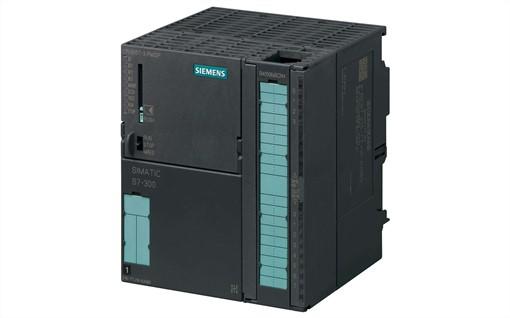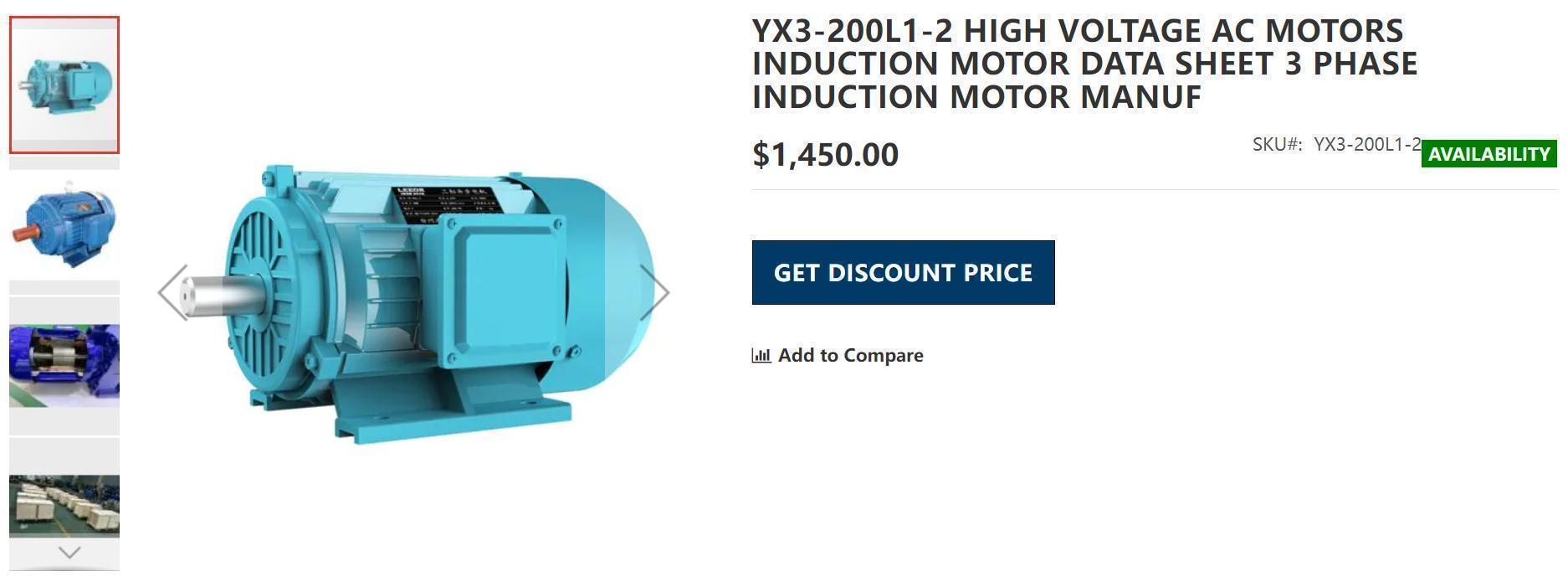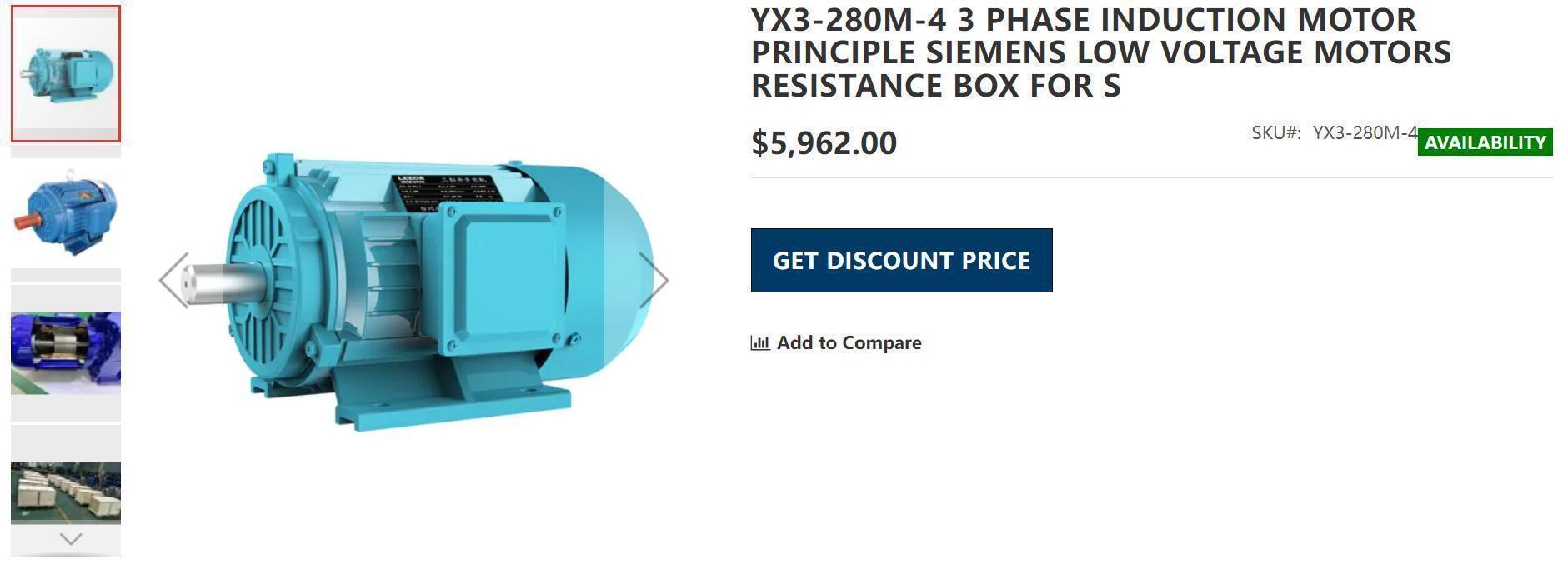The programmable controller produced by the German company Siemens (SIEMENS) is also widely used in China, and has applications in metallurgy, chemical industry, printing production lines and other fields. Siemens (SIEMENS) PLC products include LOGO, S7-200, S7-1200, S7-300, S7-400, S7-1500 and so on. Siemens S7 series PLCs are small in size, fast in speed and standardized, with network communication capabilities, stronger functions and high reliability. S7 series PLC products can be divided into micro PLC (such as S7-200), PLC with small-scale performance requirements (such as S7-300) and PLC with medium and high performance requirements (such as S7-400).
The following is the product model and its introduction:
6ES73121AE140AB0, 6ES73125BF040AB0, 6ES73135BG040AB0, 6ES73135BG044AB1, 6ES73135BG044AB2, 6ES73136BG040AB0, 6ES73136CG040AB0, 6ES73136CG044AB1, 6ES73136CG044AB2, 6ES73141AG140AB0, 6ES73146BH040AB0, 6ES73146CH040AB0, 6ES73146CH044AB1, 6ES73146CH044AB2, 6ES73146EH040AB0, 6ES73146EH044AB1, 6ES73146EH044AB2, 6ES73152AH140AB0, 6ES73152EH140AB0, 6ES73172AK140AB0, 6ES73172EK140AB0, 6ES73183EL010AB0, 6ES73156TH130AB0, 6ES73157TJ100AB0, 6ES73176TK130AB0, 6ES73177TK100AB0, 6ES79538LG200AA0, 6ES79538LJ300AA0, 6ES79538LL310AA0, 6ES79538LM200AA0, 6ES79538LP200AA0, 6ES79538LF300AA0, 6ES79538LP310AA0, 6ES79538LG300AA0, 6ES79538LM310AA0, 6ES73401AH020AE0, 6ES73401BH020AE0, 6ES73401CH020AE0, 6ES73411AH020AE0, 6ES73411BH020AE0, 6ES73411CH020AE0, 6ES73502AH010AE0
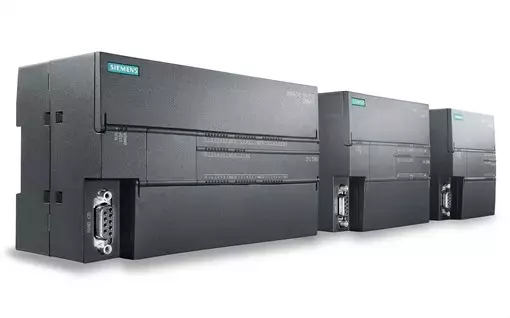
1. Siemens S7-200smart controller series is a complete product portfolio, including the basic smart logic controller LOGO! And S7 series performance programmable controller, Siemens S7-200smart agent, Siemens S7-200smart, S7-200smart, and then PC-based automation control system. Regardless of the requirements, it can be flexibly combined and customized according to specific application needs and budget, and can be satisfied one by one. SIMATIC S7-200 SMART is a small PLC product customized by Siemens for Chinese customers after extensive market research. Combining Siemens SINAMICS drive products and SIMATIC human-machine interface products, the small automatic solution with S7-200 SMART as the core will create more value for Chinese customers. Siemens S7-200smart agent, Siemens S7-200smart, S7-200smart.
S7-200 SMART- Smarter and more economical controller
High performance, high integration, and more simplicity SIMATIC S7-200 SMART is a small PLC product with high cost performance, which is customized by Siemens for Chinese customers. Combining Siemens SINAMICS drive products and SIMATIC human-machine interface products, small automation solutions with S7-200 SMART as the core will create more value for customers.
Ethernet interconnection, economical and convenient
The standard PROFINET interface of the CPU supports multiple communication protocols and can communicate with PLCs, touch screens, frequency converters, servo drives, and host computers.
Multi-axis operation control, flexible
The CPU body integrates multi-channel high-speed pulse output and PROFINET interface, which can connect multiple servo drives.
Universal SD card, remote update
The integrated Micro SD card slot can realize the function of remote maintenance program. Easily update programs, restore factory settings, and upgrade firmware.
High-speed chips, the more performance
Equipped with Siemens special high-speed processor chip, the basic instruction execution time can reach 0.15 μs.
Rich models, more choices
Provide different types of CPU modules and expansion modules with rich I / O points.
Option expansion
The novel signal board design can expand communication ports, digital channels, and analog channels.
The new S7-200 SMART brings two different types of CPU modules, standard and economical, with orientations that meet the various needs of different industries, different customers, and different devices. As an expandable CPU module, the standard type can meet the application of larger demand for I / O scale and more complicated logic control; while the economical CPU module directly meets the relatively simple control requirements through the stand-alone body.
2. The S7-200 Yue, has been tried and tested, suitable for various applications in the industrial field:
· Compact and compact structure-ideal for any application in tight spaces
· Basic and functions in all CPU models,
· Large capacity program and data storage
· Outstanding real-time response-the entire process can be fully controlled at any time, thereby improving quality, efficiency and performance
· Easy to use STEP 7-Micro / WIN engineering software-ideal for beginners and experts
· Integrated R-S 485 interface or use as system bus
· Its fast and operational sequence and process control
· Complete control of time-critical processes through time interruption
Design and function
Optional modules
· Modularization of 5 different CPUs in the range, with basic functions and integrated Freeport communication interface
· A series of expansion modules for various functions:
-Digital / analog expansion, which can be upgraded to specific requirements, as PROFIBUS communication of slave station
-AS-Interface communication as master station
-Exact temperature measurement
-Positioning
-remote diagnosis
-Ethernet / Internet communication
-SIWAREX MS
main feature
· Highlight memory card for data recording, recipe management, STEP 7-Micro / WIN project saving, and file storage in various formats
· PID automatic tuning function
· Two built-in serial ports for extended communication options, for example: used with other manufacturers' devices (CPU 224 XP, CPU 226)
· CPU 224 XP with built-in analog input / output
3. Siemens S7-1200CPU controller is the core of our new product, which can achieve simple but accurate automation tasks. The SIMATIC S7-1200 controller implements a modular and compact design, powerful, investment and fully suitable for various applications. The design with strong expandability and flexibility, can realize the communication interface of standard industrial communication and a whole set of powerful integrated technical functions, making the controller an important part of a complete and automatic solution.
The performance of the SIMATIC HMI base panel is optimized to be compatible with this new controller and powerful integrated engineering, which ensures simplified development, fast start-up, accurate monitoring and grade availability. It is the mutual synergy and innovative features of these products that help you increase the efficiency of small automation systems to a single level.
Advantage
· Integration
The performance of the SIMATIC HMI base panel is optimized to be compatible with this new controller and powerful integrated engineering, which ensures simplified development, fast start-up, accurate monitoring and grade availability. It is the mutual synergy and innovative features of these products that help you increase the efficiency of small automation systems to a single level.
· Modular concept for compact automation in scalable design.
SIMATIC S7-1200 has an integrated PROFINET interface, powerful integrated technical functions, and a highly scalable and flexible design. It achieves simple communication, technical task solutions, and fully meets the application requirements of a series of independent automation systems.
Realize efficiency in engineering configuration.
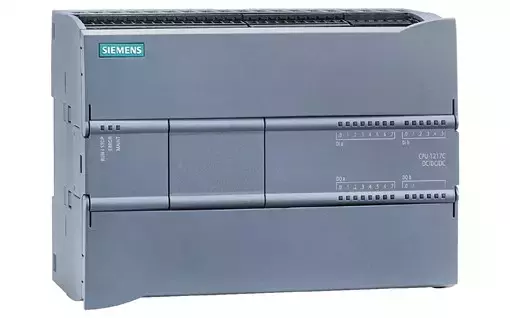
classification:
Programmable controllers are produced by the needs of modern production, and the classification of programmable controllers must also meet the needs of modern production.
Generally speaking, the programmable controller can be classified from three angles. One is to classify from the scale of the programmable controller, the second is to classify from the performance of the programmable controller, and the third is to classify from the structural characteristics of the programmable controller.
Control scale
Can be divided into mainframe, medium-sized machine and minicomputer.
Minicomputer: The control point of the minicomputer is generally within 256 points, suitable for stand-alone control or control of small systems.
Siemens minicomputers have S7-200: processing speed 0.8 ~ 1.2ms; memory 2k; digital quantity 248 points; analog quantity 35 channels.
Medium-sized machine: The control point of the medium-sized machine is generally not more than 2048 points. It can be used to directly control the equipment and can also monitor multiple next-level programmable controllers. It is suitable for medium-sized or large-scale control systems.
Siemens medium-sized machine has S7-300: processing speed 0.8 ~ 1.2ms; memory 2k; digital quantity 1024 points; analog quantity 128 channels; network PROFIBUS; industrial Ethernet; MPI.
Mainframe: The control point of the mainframe is generally greater than 2048 points, which can not only complete more complicated arithmetic operations but also perform complex matrix operations. It can not only be used to directly control the equipment, but also to monitor multiple programmable controllers of the next level.
Siemens mainframes have S7-1500, S7-400: processing speed 0.3ms / 1k words; memory 512k; I / O point 12672;
Control performance
Can be divided into high-end machines, mid-range machines and low-end machines.
Low gear
This type of programmable controller has basic control functions and general computing capabilities. The working speed is relatively low, and the number of input and output modules that can be taken is relatively small.
For example, the S7-200 produced by the German company SIEMENS falls into this category.
Mid-range
This type of programmable controller has a strong control function and a strong computing ability. It can complete not only general logic operations, but also more complex trigonometric functions, exponents, and PID operations. The working speed is relatively fast, the number of input and output modules that can be taken is relatively large, and the types of input and output modules are also relatively large.
For example, the S7-300 produced by the German company SIEMENS falls into this category.
High-end machine
This type of programmable controller has powerful control functions and powerful computing capabilities. It can not only complete logical operations, trigonometric function operations, exponential operations and PID operations, but also perform complex matrix operations. The working speed is very fast, the number of input and output modules that can be carried is large, and the types of input and output modules are also very comprehensive. This type of programmable controller can complete large-scale control tasks. Generally used as the master station in networking.
For example, the S7-400 produced by the German company SIEMENS falls into this category.
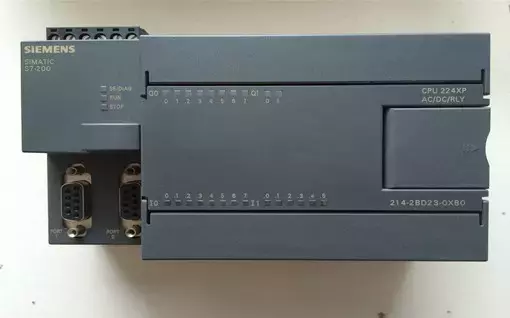
Structure
Integral
The integral structure of the programmable controller integrates the power supply, CPU, memory, and I / O system into a unit, which is called the basic unit. A basic unit is a complete PLC.
When the control points do not meet the needs, the expansion unit can be connected. The characteristics of the integral structure are very compact, small size, low cost and easy installation.
Modular
The programmable controller with combined structure divides the various components of the PLC system according to function
Several modules, such as CPU modules, input modules, output modules, power modules, etc. The functions of each module are relatively simple, but the types of modules are becoming more and more abundant. For example, some programmable controllers, in addition to some basic I / O modules, also have some special function modules, such as temperature detection module, position detection module, PID control module, communication module and so on. The characteristic of PLC with combined structure is that CPU, input and output are independent modules. Uniform module size, neat installation, free I / O point selection, easy installation, debugging, expansion and maintenance.
Stacked
The stacked structure combines the advantages of compact structure, small size, convenient installation and I / O points of combined structure with smart words and neat installation. It is also composed of a combination of various units. Its characteristic is that the CPU becomes an independent basic unit (composed of CPU and certain I / O points), and other I / O modules are expansion units. When installing, no base board is used, and only cables are used to connect the units, and each unit can be stacked one by one. Make the system flexible and compact.
Detailed introduction:
1. SIMATIC S7-200 PLC S7-200 PLC is an ultra-miniaturized PLC, which is suitable for automatic detection, monitoring and control in various industries and various occasions. The powerful functions of S7-200 PLC make it possible to achieve complex control functions no matter if it is stand-alone or connected into a network. S7-200PLC can provide 4 different basic models and 8 kinds of CPU to choose to use.
2. SIMATIC S7-300 PLC S7-300 is a modular small PLC system that can meet the application of medium performance requirements. Various individual modules can be extensively combined to form systems with different requirements. Compared with the S7-200 PLC, the S7-300 PLC adopts a modular structure and has a high-speed (0.6 ~ 0.1μs) instruction operation speed; more complex arithmetic operations are effectively realized by floating-point operation; a standard user interface The software tool is convenient for users to assign parameters to all modules; convenient man-machine interface services have been integrated into the S7-300 operating system, and the programming requirements for man-machine dialogue are greatly reduced. The SIMATIC Human Machine Interface (HMI) obtains data from the S7-300, and the S7-300 transmits these data at the refresh rate specified by the user. The S7-300 operating system automatically handles data transmission; the CPU's intelligent diagnostic system continuously monitors the system for normal functions, recording errors, and special system events (eg, timeout, module replacement, etc.); multi-level password protection can Allows users to protect their technical secrets highly and effectively, preventing unauthorized copying and modification; S7-300 PLC is equipped with an operating mode selection switch. The operating mode selection switch can be pulled out like a key. Change the operation mode to prevent illegal deletion or rewriting of user programs. With powerful communication function, S7-300 PLC can provide communication configuration function through the user interface of programming software Step 7, which makes configuration very easy and simple. S7-300 PLC has many different communication interfaces, and connects AS-I bus interface and industrial Ethernet bus system through multiple communication processors; serial communication processor is used to connect point-to-point communication system; multi-point interface (MPI) Integrated in the CPU, it is used to connect programmer, PC, man-machine interface system and other automation control systems such as SIMATIC S7 / M7 / C7 at the same time.
3. SIMATIC S7-400 PLC S7-400 PLC is a programmable controller for medium and high-end performance ranges. The S7-400 PLC adopts a modular fanless design, which is reliable and durable. At the same time, it can choose CPUs of multiple levels (gradual function upgrade) and is equipped with templates for multiple general functions. system. When the scale of the control system is expanded or upgraded, as long as some templates are properly added, the system can be upgraded and fully meet the needs.
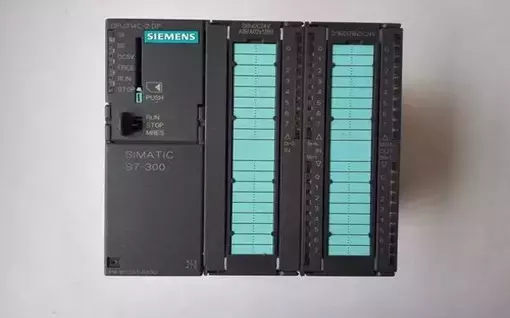
Working principle:
When PLC is put into operation, its working process is generally divided into three stages, namely input sampling, user program execution and output refresh. Completing the above three stages is called a scan cycle. During the entire operation, the CPU of the PLC repeatedly executes the above three stages at a certain scanning speed.
Input sampling
In the input sampling stage, the PLC sequentially reads all input states and data in a scanning manner and stores them in the corresponding unit in the I / O image area. After the input sampling is completed, it shifts to the user program execution and output refresh phase. In these two stages, even if the input status and data change, the status and data of the corresponding unit in the I / O map area will not change. Therefore, if the input is a pulse signal, the width of the pulse signal must be greater than one scan period to ensure that the input can be read in any case.
User program execution
In the user program execution phase, the PLC always scans the user program (ladder diagram) in order from top to bottom. When scanning each ladder diagram, the control circuit composed of contacts on the left side of the ladder diagram is always scanned first, and logical operations are performed on the control circuit composed of contacts in the order of left first, then right, and then top and bottom. , And then refresh the state of the corresponding bit of the logic coil in the system RAM storage area according to the result of the logic operation; or refresh the state of the corresponding bit of the output coil in the I / O image area; or determine whether to execute the ladder diagram The specified special function instructions.
That is, during the execution of the user program, only the status and data of the input point in the I / O image area will not change, while other output points and soft devices are in the I / O image area or the system RAM storage area. Both state and data may change, and the ladder diagram listed above, the program execution results will affect the ladder diagrams that are used below for those coils or data; on the contrary, the ladder diagrams listed below, which The status or data of the logic coil being refreshed can only affect the programs arranged on it until the next scan cycle.
Output refresh
When the scanning user program ends, the PLC enters the output refresh stage. During this period, the CPU refreshes all output latch circuits according to the corresponding status and data in the I / O image area, and then drives the corresponding peripherals through the output circuit. At this time, it is the real output of PLC.
The same several ladder diagrams have different arrangement order and different execution results. In addition, the results of the scanning user program are different from the results of the parallel operation of the hard logic of the relay control device. Of course, if the time taken by the scan cycle is negligible for the entire operation, then there is no difference between the two.
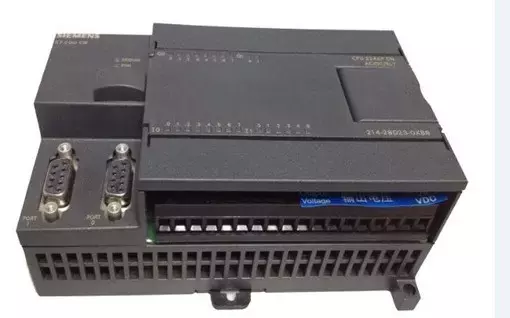
Advantages:
1) Reliable
PLC does not require a large number of moving components and connected electronic components. Its wiring is greatly reduced. At the same time, the maintenance of the system is simple and the maintenance time is short. Plc adopts a series of reliability design methods to design. For example: redundant design. Power failure protection, fault diagnosis and information protection and recovery. PLC is a control device specially designed for industrial production process control. It has a simpler programming language and more reliable hardware than general computer control. Using a simplified programming language. The programming error rate is greatly reduced.
2) Easy to operate
PLC has high operability. It has the characteristics of simple programming, convenient operation, easy maintenance, etc. It is generally not easy to make operation errors. The operation of PLC includes the operation of program input and program modification. The input of the program can be directly displayed, and the operation of changing the program can also be directly searched or searched for the program according to the required address number or contact number, and then changed. PLC has a variety of programming languages available. Used for ladder diagram and electrical schematic diagram is relatively close. Easy to grasp and understand. The self-diagnostic function of PLC reduces the maintenance skills of maintenance personnel. When the system fails, through the self-diagnosis of hardware and software, maintenance personnel can quickly find the location of the failure.
3) flexible
The programming languages adopted by PLC include ladder diagram, Boolean mnemonic, function table diagram, function module and statement description programming language. The diversity of programming methods makes programming simple and expands application. The operation is very flexible and convenient, and it is very easy to monitor and control variables.
